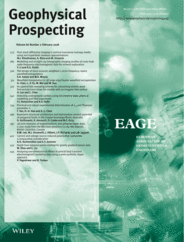
Full text loading...
The topography‐dependent eikonal equation formulated in a curvilinear coordinate system has recently been established and revealed as being effective in calculating first‐arrival travel times of seismic waves in an Earth model with an irregular free surface. The Lax–Friedrichs sweeping scheme, widely used in previous studies as for approximating the topography‐dependent eikonal equation viscosity solutions, is more dissipative and needs a much higher number of iterations to converge. Furthermore, the required number of iterations grows with the grid refinement and results in heavy computation in dense grids, which hampers the application of the Lax–Friedrichs sweeping scheme to seismic wave travel‐time calculation and high‐resolution imaging. In this paper, we introduce a new upwind fast sweeping solver by discretising the Legendre transform of the numerical Hamiltonian of the topography‐dependent eikonal equation using an explicit formula. The minimisation related to the Legendre transform in the sweeping scheme is solved analytically, which proved to be much more efficient than the Lax–Friedrichs algorithm in solving the topography‐dependent eikonal equation. Several numerical experiments demonstrate that the new upwind fast sweeping method converges and achieves much better accuracy after a finite number of iterations, independently of the mesh size, which makes it an efficient and robust tool for calculating travel times in the presence of a non‐flat free surface.

Article metrics loading...

Full text loading...
References


Data & Media loading...

